Science
Frogs and Toads Together: Why do Amphibians Group Up?April 11, 2025

2

Planning a fun and engaging classroom celebration poses a unique challenge for elementary teachers, unless you decide to plan an alternative Valentine’s Day experience for your students. In this guide, we’ll transform your Valentine’s Day party into an educational experience, exploring engaging activities and creative crafts that align with your science curriculum. Let’s redefine classroom celebrations, merging joy and education in the elementary classroom!
Don’t need all the info? Use this list to get to what you need:
Finding fun and unique classroom Valentine’s Day party ideas seems to get more challenging each year. Deciding on a distinctive theme can help you focus and create a cohesive and enjoyable experience for you, your students, and your parent volunteers.
Consider these alternative Valentine’s Day themes for your classroom bash:
Enhance your theme by tying it to your science curriculum. If you follow the Next Generation Science Standards, there are many ways to use your curricular goals as inspiration for your alternative Valentine’s Day celebration. Also, if the party falls at the end of your unit, it’s a great way to celebrate your students’ hard work and learning.
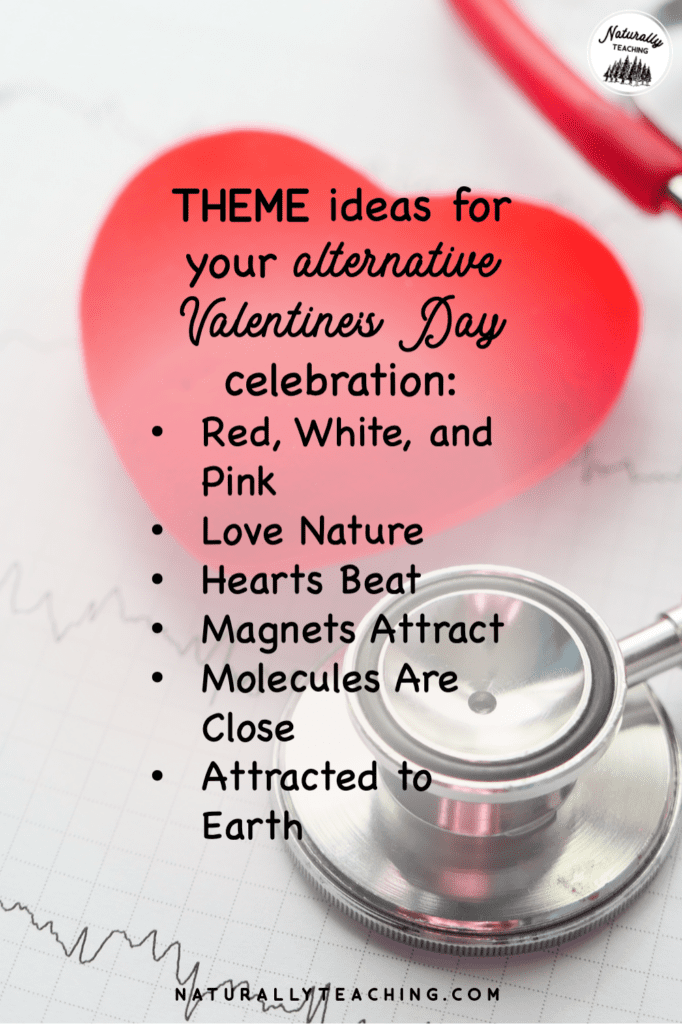
In the Next Generation Science Standards, Kindergarten students get to learn about reducing the impact of humans on nature (NGSS K-ESS3-3); celebrate the holiday with a love nature theme. 1st grade students get to learn about heredity in animals (NGSS 1-LS1-2); celebrate Valentine’s Day with an animal families theme. 2nd grade students get to learn about pollination (NGSS 2-LS2-2); celebrate the holiday with an insects and host plants theme.
3rd grade students get to learn about magnets, attraction, and repulsion (NGSS 3-PS2-3); celebrate Valentine’s Day with a magnets attract theme. 4th grade students get to learn about animal internal and external structures (NGSS 4-LS1-1); celebrate the holiday with an animal hearts theme. 5th grade students get to learn about gravitational pull (NGSS 5-PS2-1); celebrate Valentine’s Day with an attracted to the Earth theme.
After you decide your alternative Valentine’s Day theme, it’s helpful to put together a classroom Valentine party letter to parents.This letter should include important information about your alternative Valentine’s Day party so that you and your parents are on the same page. Share the date and time with your parents and make sure not to waver from this commitment. Draft this letter in advance to give your parents the time they need to make arrangements for work or for younger siblings at home if they would like to volunteer.
Depending on the previous traditions of your school, it may be worth adding an explanation for why you are celebrating an alternative Valentine’s Day theme instead of a focus on love and hearts this year. Use positive words like “unity”, “community”, and “encompassing” to help your parents see the positive effect this change can have on your students and classroom as a whole.
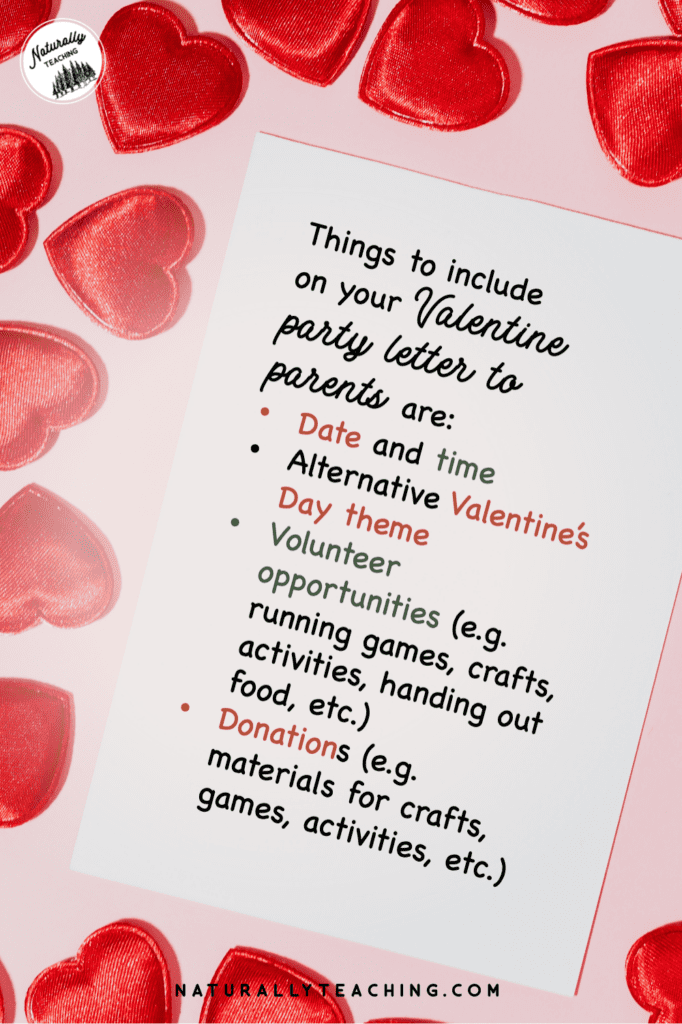
Other important information you could include in your letter are specific volunteer opportunities, how to sign up for those opportunities, and what your theme is. Some parents may be able to volunteer their time and help run games, activities, or assist with food. Other parents may be able to send in snacks or craft supplies. Many of your parents probably want to help your party in some way; share with them how they can get involved. Your classroom Valentine party letter to parents is a great place to share with your parents how to sign up to help.
When you are considering classroom Valentine activities you can start with the common components of an indoor elementary school party. Consider indoor games, holiday party food, and holiday party crafts (see suggestions later in this article).
One of the best ways to incorporate all of these experiences is to plan them as centers during your alternative Valentine’s Day party. Hopefully, you will have help from parents that signed up on your classroom Valentine’s Day party sign-up. I would suggest having at least two parents at your food and craft stations. One parent should be able to handle each game.
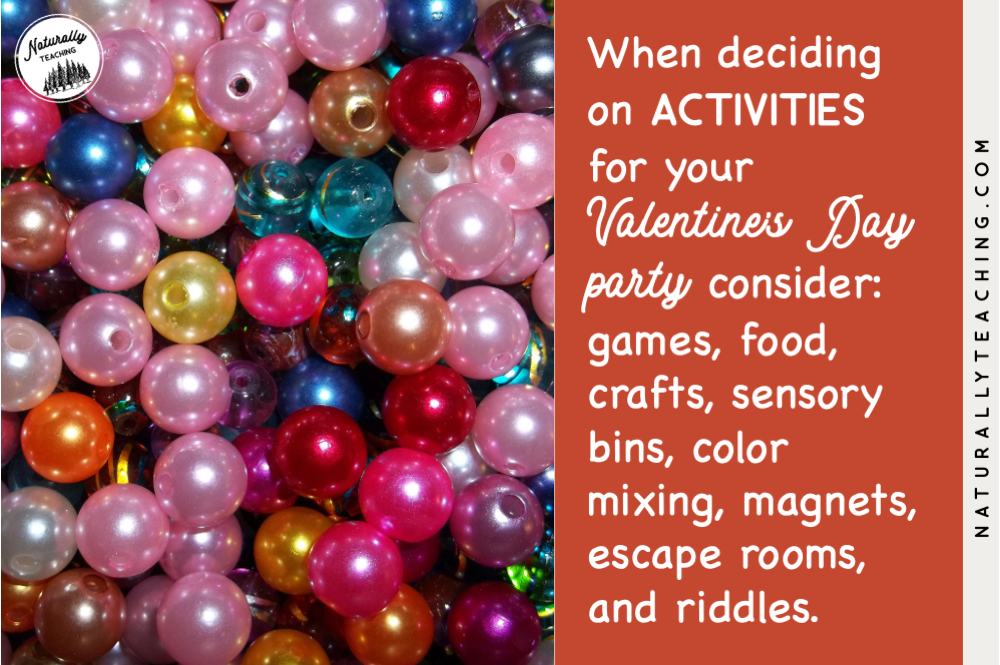
You can also think outside the box by considering indoor Valentine’s Day experiences as well. For your early childhood learners, sensory bins would make a wonderful center when considering classroom Valentine activities. If you’re working towards the “Molecules Are Close” theme, you could put together a molecule exploration sensory bin. The Keeper of the Memories put together three different levels of molecule exploration in this article, including building molecule models from cornstarch noodles, an atom sort with beads and pipe cleaners, and connecting atoms with puzzle-like connectors. Take a look at what you have in your classroom and get creative!
She Loves Science took the concept of atoms and molecules to a larger scale and provided an opportunity for early childhood learners to build molecules with blueprints using craft sticks and paper plates.
If you’re going for the “Red, White, and Pink” theme, consider activities focused on color mixing. Sensory bags could be a fun (and mess-free) way to get your early childhood students mixing red and white to make pink. Pocket of Preschool shows off their color mixing paint sensory bags in this article along with other awesome color mixing activities for preschoolers. They include ideas such as color mixing finger painting, color journals, smash paintings, melting tissue paper, and more. Substitute red and white to make pink in these activities and you’ve got tons of ideas to get your alternative Valentine’s Day into tip-top shape!
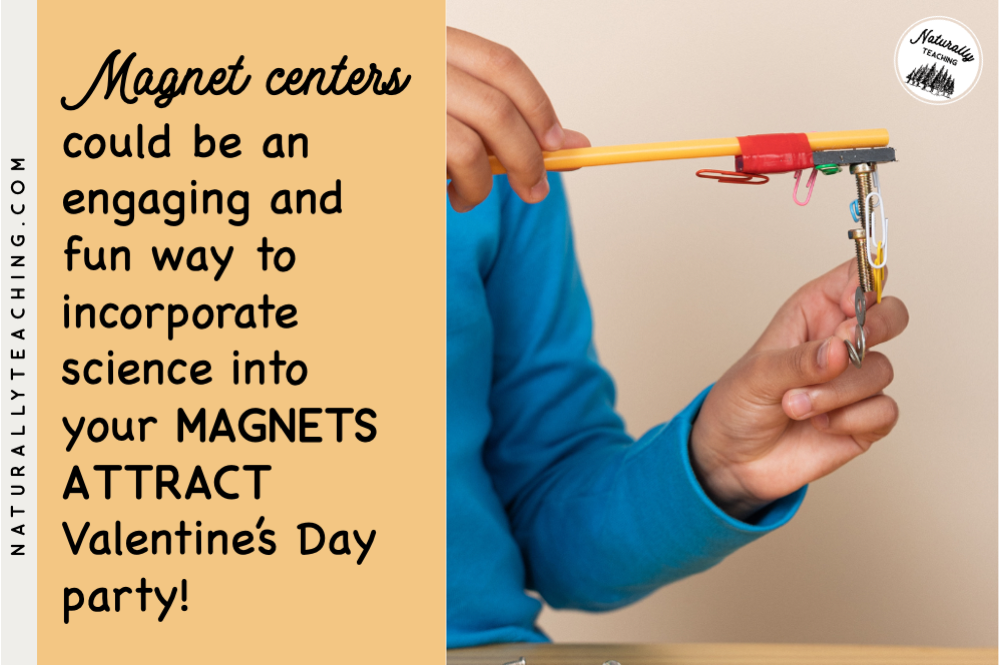
If you’re working towards the “Magnets Attract” theme, there are tons of ideas out there for magnet play that you could put together for centers. Check out this list of 10 fantastic magnet experiments for kids compiled by Science Sparks. Primary Theme Park has a wonderful activity for working hard like the heart and could be a great challenge for your students enjoying the “Hearts Beat” theme for their alternative Valentine’s Day party.
For older students, consider something more mature that helps them work together. There are tons of escape rooms available for purchase online that your students would love! You could also put together a series of riddles to match your theme that you pose to your upper elementary kiddos.
For classroom Valentine party games, consider creating or buying a Valentine’s Day-themed Bingo game that could be played together as a class. This can tie into your alternative Valentine’s Day theme if you’d like (see suggestions in the beginning of this article). It can also tie into your science curriculum if you just finished or started working on animal families, heredity, internal/external structures, and more.
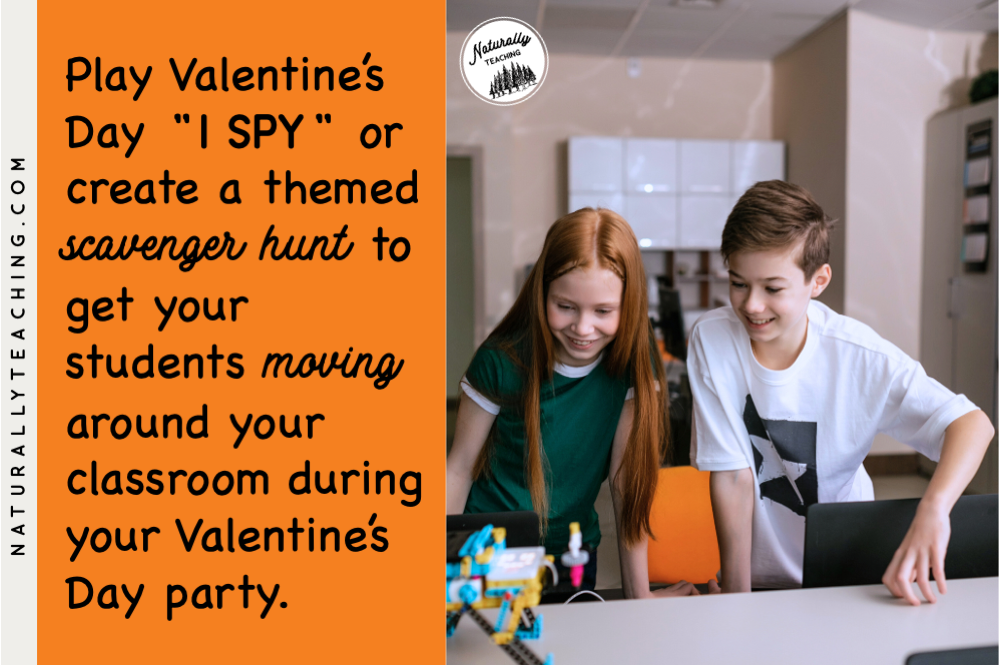
You could also play several rounds of Valentine’s Day “I Spy”. Prepare for these classroom Valentine party games by hiding a variety of theme-related things around your classroom and then have whoever gives the clues use preposition or spatial words like next to, above, below or other words you may be using in math or social studies.
You could put together or purchase an indoor scavenger hunt. Prepare for this activity ahead of time by deciding if this is a collaborative hunt where everyone works together, or if it is an individual hunt where everyone spreads out and works at their own pace. Then, you should put together clues to lead your students to the one or more Valentine’s Day-themed objects around the space. This could be extra special if you connect it to a story that you recently read about your alternative Valentine’s Day theme.
When contemplating classroom Valentine party food ideas, take into account the allergies in your classroom as well as the school’s policy on food. In light of the pandemic, more schools have moved toward pre-packaged items. Check with your administrator if you are unsure of your school’s policy on snacks. Make sure to share with your parents how they can help you by including your classroom Valentine party food ideas on your classroom party sign-up.
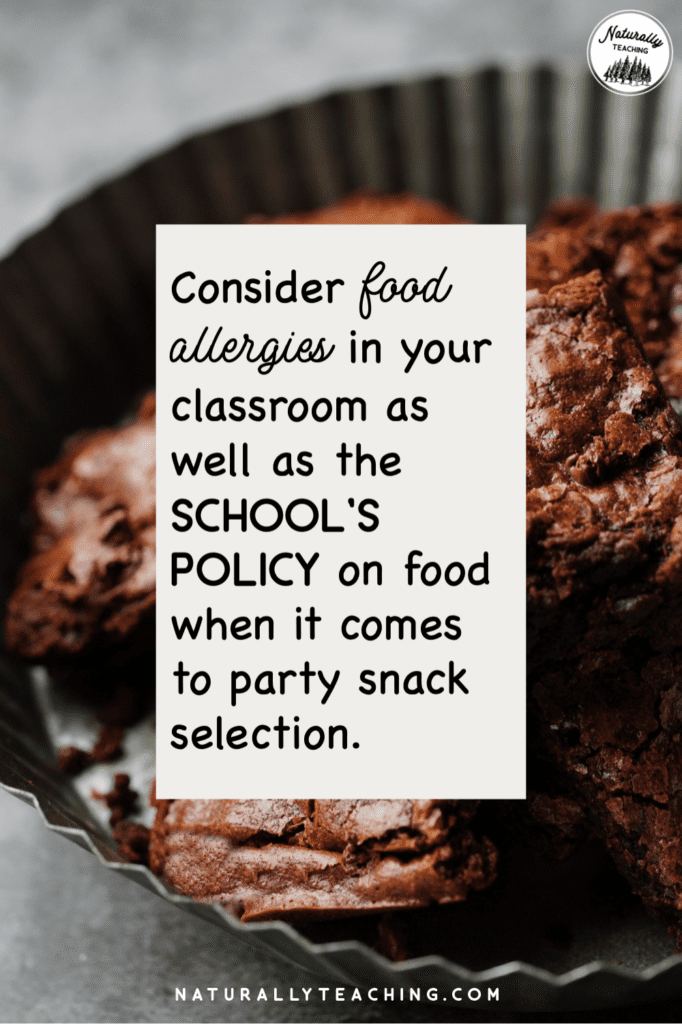
To get you started with brainstorming, here’s a list of 5 Valentine’s-themed snacks that could work when considering classroom Valentine party food ideas:
When contemplating Valentine’s class party craft ideas, take into account the amount of time each craft will take, how easy it is to reset materials (if you are doing them in centers), and how your clean up will go. Creating centers with parents to help supervise can help save you a major headache! Make sure to share with your parents how they can help you by including your Valentine’s class party craft ideas on your classroom party sign-up.

To get you started with brainstorming, here’s a list of 5 Valentine’s-themed crafts that could work when considering Valentine’s class party craft ideas.
As we conclude this guide to alternative Valentine’s Day parties for the elementary classroom, I hope you found inspiration to create new traditions and experiences for your students this year. These alternative celebrations offer a chance to create lasting memories while reinforcing essential educational concepts. So, seize the opportunity to infuse joy into your festivities, leaving a lasting impact on your students’ learning journey. Let the spirit of celebration and education intertwine, making this Valentine’s Day a truly memorable experience for both you and your eager learners!
Looking for activities to help you teach the water cycle as part of your Valentine’s Day centers? Check out my “Maple Syrup and Water Cycle Mini Unit for 2nd Grade” with ELA, science, and math activities!
Do you have any amazing suggestions for alternative Valentine’s Day parties? Describe them in the comments section to inspire a fellow elementary teacher to take action!
Looking for other articles about holiday parties in the classroom? Check out this other great read:
“How Do You Celebrate the Winter Solstice with Elementary Students?”
2 thoughts on “Beyond Hearts and Cupids: A Guide to Alternative Valentine’s Day Parties for Elementary Teachers”